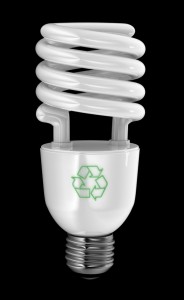 How do you choose among the various types of light bulbs that are available today?
How do you choose among the various types of light bulbs that are available today?
Incandescent bulbs are the traditional light bulbs with a filament wire. They are the least expensive to buy, but also the least efficient in using electricity.
Compact fluorescent (CFL) bulbs use 65-75% less energy than standard incandescent bulbs and last 10 times longer (7-11 years). They also produce less heat, reducing your air conditioner’s load in the summer. However, some people don’t like the fact that CFLs take a few seconds to reach full brightness. Also, most are not made for lights that have a dimmer switch or a light sensor that automatically turns on and off. Look for bulbs that say “dimmable” for these uses. CFLs contain mercury, so if they break, follow the clean-up instructions carefully. Cost: $1.25 to $10.
Light-emitting diode (LED) bulbs are a good alternative to CFLs. They also use 75% less energy than incandescent bulbs and they last 23-46 years. They brighten instantly and turning them on and off frequently doesn’t affect performance. They also don’t use mercury like CFLs do. LED bulbs can be dimmed and used with timers and motion or light sensors. The drawback is that they are more expensive than CFLs, running from $15 to $60 per bulb. Nevertheless, a $25 LED will save you about $130 over its 23-year life, compared with an incandescent. Prices for a 60-watt bulb are expected to drop to about $10 by 2014 or 2015. So, in the meantime, a CFL is the less expensive option, unless the advantages of the LED mentioned above are worth the difference to you in price. Look online for manufacturer coupons and utility rebates to save $10-20 per bulb.
See Consumer Reports ratings of light bulbs to choose the best ones.
See other advice on saving money on electricity.
Safety notes:
- CFLs contain sufficient mercury for the Environmental Protection Agency to recommend a 10-to-11-step process for the clean-up of broken CFLs. You are also supposed to take discarded bulbs to a special disposal center. If you don’t, it places dangerous mercury in the air when the bulbs inevitably break in trash cans or garbage trucks.
- LED bulbs contain lead and nickel, exposure to which can be a long-term health risk.



